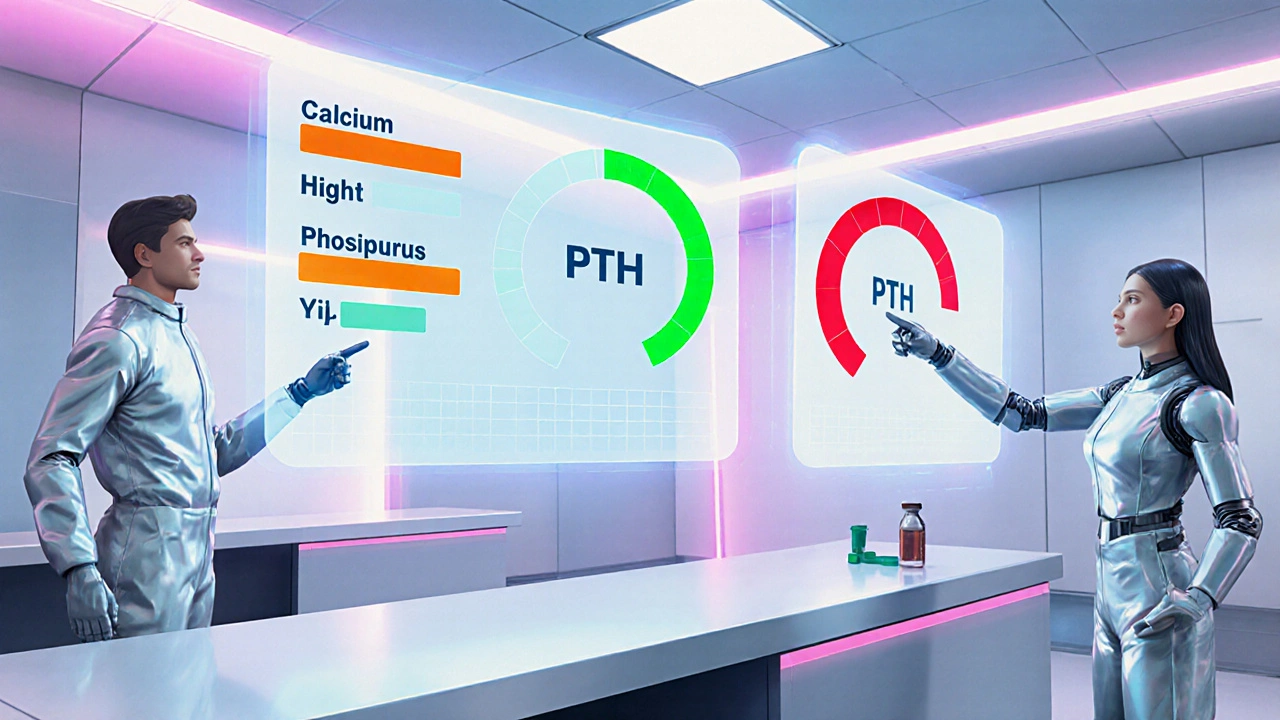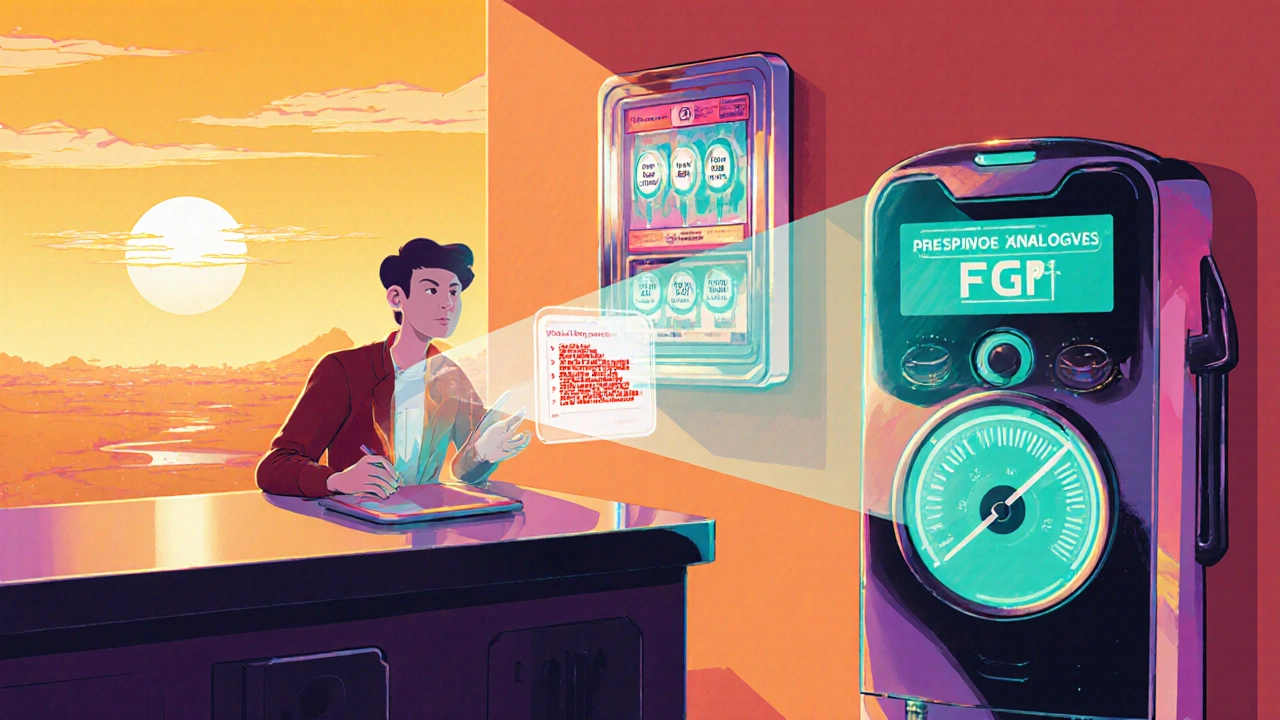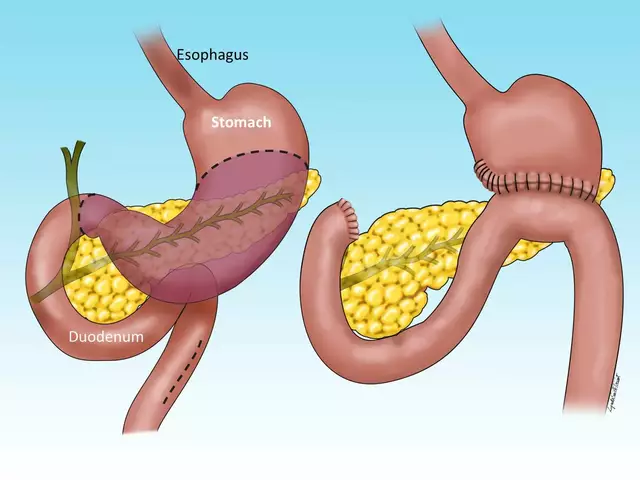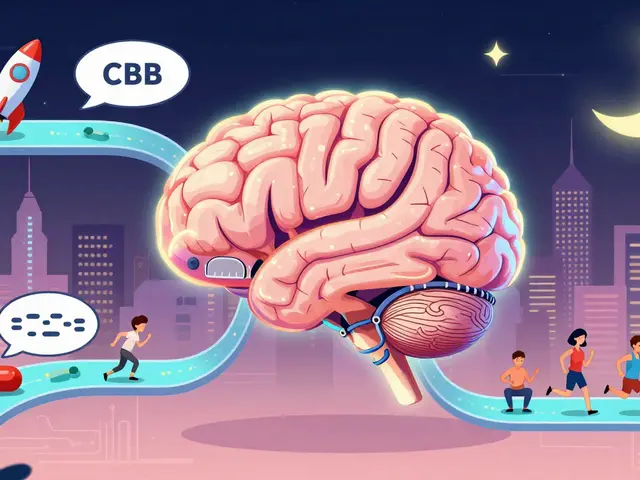Calcium-Phosphorus Product Calculator
Calculate your calcium-phosphorus product (Ca × P) and check if it's within target range (< 55 mg²/dL²) for chronic kidney disease patients.
Key Takeaways
- Osteodystrophy is a bone disorder linked to chronic kidney disease and mineral imbalances.
- Calcium and phosphorus must stay in a tight ratio; deviations trigger hormonal cascades that damage bone.
- Elevated phosphorus and low calcium raise parathyroid hormone (PTH), accelerating bone resorption.
- Regular labs (serum Ca, P, PTH, vitamin D) help catch problems early.
- Diet, phosphate binders, vitamin D analogues, and dialysis adjustments are the core management tools.
What Is Osteodystrophy?
Osteodystrophy is a broad term for bone disease that stems from chronic metabolic disturbances, most often chronic kidney disease (CKD). The condition manifests as weakened, deformed, or painful bones because the normal balance of minerals and hormones that remodel bone is disrupted.
When kidneys can’t clear phosphate or activate vitamin D, serum phosphorus climbs while calcium falls. The body reacts by over‑producing parathyroid hormone (PTH), a state called secondary hyperparathyroidism. High PTH forces bone‑forming cells (osteoblasts) to work faster than they should, while simultaneously activating bone‑breaking cells (osteoclasts). The net result is porous, brittle bone - the hallmark of osteodystrophy.
Calcium: The Foundation of Healthy Bone
Calcium is the primary mineral in the skeletal matrix, making up about 99% of the body’s calcium stores. About 90% of that calcium resides in bone, providing rigidity and strength. The remaining 10% circulates in blood, where it supports muscle contraction, nerve signaling, and blood clotting.
Bone cells constantly exchange calcium with the bloodstream. When serum calcium drops, the parathyroid glands release PTH, which tells the kidneys to re‑absorb more calcium and the intestines to absorb more via activated vitamin D (calcitriol). In a healthy system, this feedback loop keeps serum calcium within a narrow range (≈ 8.5‑10.5 mg/dL).
Phosphorus: The Unsung Partner in Bone Mineralization
Phosphorus pairs with calcium to form hydroxyapatite crystals, the mineral that gives bone its hardness. About 85% of the body’s phosphorus is stored in bone, the rest circulates in blood and cells.
Phosphorus balance is tightly regulated by the kidneys. When kidney function declines, phosphate excretion falls, and serum phosphorus can rise well above the normal 2.5‑4.5 mg/dL range. High phosphate levels directly stimulate PTH release and suppress vitamin D activation, creating a vicious cycle that erodes bone.

How the Calcium‑Phosphorus Imbalance Triggers Osteodystrophy
Three intertwined mechanisms drive bone damage when calcium and phosphorus drift out of balance:
- Secondary hyperparathyroidism: Elevated phosphorus and low calcium provoke excess PTH, which speeds up bone turnover.
- Vitamin D deficiency: CKD‑related loss of 1‑α‑hydroxylase reduces calcitriol, limiting calcium absorption from the gut.
- Direct phosphate toxicity: High phosphate can deposit in soft tissues and impair osteoblast function, weakening new bone formation.
The combined effect is a net loss of mineralized bone, leading to the radiographic signs of osteodystrophy - subperiosteal erosions, bone cysts, and increased fracture risk.
Clinical Indicators & Lab Values
| Parameter | Normal Range | Typical Osteodystrophy |
|---|---|---|
| Serum Calcium (mg/dL) | 8.5‑10.5 | 7.0‑8.4 (low) |
| Serum Phosphorus (mg/dL) | 2.5‑4.5 | 5.5‑7.5 (high) |
| Intact PTH (pg/mL) | 10‑65 | 150‑800 (elevated) |
| 25‑OH Vitamin D (ng/mL) | 30‑100 | 15‑30 (deficient) |
| Bone‑specific ALP (U/L) | 30‑120 | 200‑400 (high turnover) |
These numbers guide treatment decisions. For instance, if phosphorus exceeds 5 mg/dL, clinicians often start phosphate binders. When calcium falls below 8 mg/dL, calcium‑based binders or supplements become necessary.
Managing Calcium and Phosphorus Levels
Effective management hinges on three pillars: diet, medication, and dialysis adjustments.
1. Dietary Strategies
- Limit high‑phosphate foods: Processed meats, cola drinks, cheese, and certain nuts are rich in absorbable phosphate.
- Choose calcium‑rich options: Low‑fat dairy, fortified plant milks, and leafy greens help raise serum calcium without adding excess phosphate.
- Watch hidden phosphates: Food additives listed as “phosphate”, “pyrophosphate”, or “polyphosphate” can add a surprise load.
2. Pharmacologic Tools
- Phosphate binders: Calcium carbonate, sevelamer, or lanthanum carbonate are taken with meals to trap dietary phosphate.
- Active vitamin D analogues: Calcitriol or alfacalcidol enhance intestinal calcium absorption and suppress PTH.
- Calcimimetics: Cinacalcet lowers PTH by increasing the sensitivity of the parathyroid calcium‑sensing receptors.
3. Dialysis Tweaks
- Dialysate calcium concentration: Adjusting calcium in the dialysate can fine‑tune serum calcium without extra supplements.
- More frequent or longer sessions: Increased phosphate clearance reduces the burden on binders.
Regular monitoring-usually every 1‑3 months-helps keep the calcium‑phosphorus‑PTH axis in check.

Common Pitfalls & Pro Tips
- Pitfall: Relying solely on calcium‑based phosphate binders can cause hypercalcemia and vascular calcification. Pro tip: Mix calcium‑free binders if calcium levels are already high.
- Pitfall: Ignoring the “organic vs inorganic” phosphate split. Organic phosphate from natural foods is less absorbable than inorganic additives. Pro tip: Focus on limiting processed foods rather than cutting all phosphate.
- Pitfall: Over‑supplementing vitamin D without checking levels can lead to hypercalcemia. Pro tip: Measure 25‑OH vitamin D first, then titrate calcitriol carefully.
- Pitfall: Assuming normal serum calcium means bone health is fine. Pro tip: Look at PTH and bone‑specific alkaline phosphatase for a fuller picture.
Future Directions in Osteodystrophy Care
Research is exploring newer agents that target fibroblast growth factor‑23 (FGF‑23), a hormone that rises early in CKD and drives phosphate loss. Early FGF‑23 inhibitors may blunt the cascade before PTH spikes, potentially preserving bone architecture.
Additionally, personalized nutrition apps that calculate hidden phosphate load are entering clinics, helping patients make smarter food choices without constant dietitian visits.
Frequently Asked Questions
Why does kidney disease affect bone health?
Kidneys filter phosphate and activate vitamin D. When they fail, phosphate builds up and vitamin D drops, triggering a hormonal imbalance that erodes bone.
Can I prevent osteodystrophy with diet alone?
Diet is a cornerstone, but most patients also need phosphate binders, vitamin D analogues, and dialysis adjustments to keep labs in range.
What is the target calcium‑phosphorus product?
Guidelines advise keeping the Ca×P product below 55 mg2/dL2 for most CKD patients to reduce vascular calcification risk.
Is high phosphate always harmful?
In CKD, even modest phosphate elevation can trigger PTH release. In healthy kidneys, the body compensates, but chronic excess still stresses bone.
How often should labs be checked?
Typically every 1‑3 months for calcium, phosphorus, PTH, and vitamin D, with more frequent checks after medication changes.
Understanding the dance between osteodystrophy, calcium, and phosphorus gives patients and clinicians a clear roadmap to protect bone health, even when the kidneys are struggling.





Mike Hamilton
October 18, 2025 AT 12:32Calcium and phosphorus gotta stay balanced or the bones pay the price.
In CKD the kidneys cant dump phosph ate and that drives PTH up.
Watching labs every month is key.
Margaret pope
October 19, 2025 AT 16:18Easily keep an eye on the calcium‑phosphorus product
It helps avoid the bone mess
Karla Johnson
October 20, 2025 AT 20:05The cascade that starts with a modest rise in serum phosphate is anything but simple and it deserves a thorough walk‑through.
First, the failing kidneys lose their ability to excrete phosphate, so serum phosphorus climbs above the normal range.
This elevation is sensed by the parathyroid glands, which crank up PTH secretion in an attempt to restore balance.
PTH then pulls calcium from the bone, accelerates renal calcium reabsorption, and stimulates the conversion of vitamin D to its active form, but in CKD the activation step is blunted.
The net effect is a chronic state of secondary hyperparathyroidism that relentlessly drives bone turnover.
Bone‑forming osteoblasts are outpaced by osteoclasts, leading to porous, brittle bone architecture.
Simultaneously, high phosphate can directly impair osteoblast function, a phenomenon sometimes called phosphate toxicity.
Over time, the skeletal system shows subperiosteal erosions, cystic lesions, and an elevated fracture risk.
Clinicians therefore monitor the calcium‑phosphorus product, keeping it under the recommended threshold of about 55 mg²/dL².
When the product creeps higher, phosphate binders become a mainstay of therapy, trapping dietary phosphate in the gut.
Calcium‑based binders can be useful, but they must be balanced against the risk of hypercalcemia and vascular calcification.
Non‑calcium binders such as sevelamer or lanthanum offer an alternative when calcium levels are already elevated.
Active vitamin D analogues, like calcitriol, help improve calcium absorption and suppress PTH, yet they must be dosed carefully to avoid overshoot.
Calcimimetics, for instance cinacalcet, sensitize the parathyroid receptors to calcium, effectively lowering PTH without adding extra calcium load.
Dialysis prescriptions can also be tweaked, adjusting dialysate calcium concentrations or increasing session frequency to enhance phosphate clearance.
All these interventions work best when guided by regular lab checks every one to three months, allowing timely adjustments and preventing the insidious progression of osteodystrophy.
Linda A
October 21, 2025 AT 23:52The bone whispers a quiet lament when minerals betray it.
It is a subdued drama, hidden beneath the clinical numbers.
Yet the truth remains stark: imbalance shatters the silent strength.
Poornima Ganesan
October 23, 2025 AT 03:38Let me set the record straight: most patients think they can dodge osteodystrophy with a trendy diet alone, which is naïve.
The literature is clear that without phosphate binders you’re courting disaster.
Ignoring vitamin D status is another rookie error that compounds the problem.
And don’t be fooled by “organic” phosphate claims – the kidney’s inability to excrete any phosphate overrides the source.
Bottom line, a comprehensive regimen is non‑negotiable.
Emma Williams
October 24, 2025 AT 07:25We all agree that teamwork makes the bone work easier
Combining diet changes with binders and dialysate tweaks gives the best outcomes
Let’s keep sharing practical tips
Rajesh Singh
October 25, 2025 AT 11:12It is morally reprehensible to sideline bone health while chasing the illusion of perfect kidney numbers.
Each missed calcium supplement is a betrayal of the body's own scaffolding.
We must champion holistic care, not just the lab stats.
Only then can we honor the dignity of patients battling chronic disease.
Albert Fernàndez Chacón
October 26, 2025 AT 13:58The calcium‑phosphate axis is like a feedback loop in a circuit – push one side and the other reacts.
When phosphate piles up, the parathyroid switches on like a thermostat gone wild.
Keeping an eye on that loop with regular labs is the smartest move.
Drew Waggoner
October 27, 2025 AT 17:45Phosphate binders are essential.
Matthew Miller
October 28, 2025 AT 21:32Hey, you’ve nailed the basics – now let’s add some fire!
Think of each medication as a teammate in a relay, passing the baton of balance down the line.
Stick to the plan and you’ll watch those bone markers drop like a champ.
Liberty Moneybomb
October 30, 2025 AT 01:18They don’t tell you that the “guidelines” are part of a hidden agenda to keep us dependent on endless medications.
All those binders and calcimimetics? Just a way to line the pockets of pharma giants.
Wake up, question the narrative, and demand simpler solutions.
Alex Lineses
October 31, 2025 AT 05:05Great point on the calcium‑phosphorus product – it’s a vital KPI for CKD management.
When you track it consistently, you empower patients to stay ahead of bone loss.
Keep reinforcing that habit and the outcomes will improve.